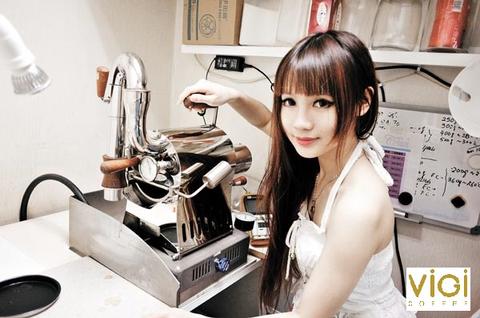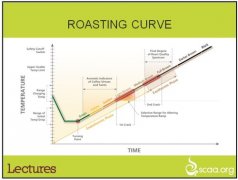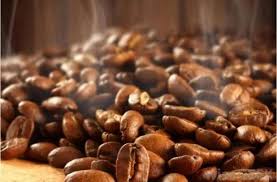Roast your own quality coffee beans. Master roasters teach you the secret of roasting.

For professional baristas, please follow the coffee workshop (Wechat official account cafe_style)
People who like desserts always want to make their own cake. similarly, people who like coffee will not be satisfied with buying ready-made coffee beans. Sometimes, drinking the so-called high-quality coffee in a coffee shop has a bitter taste, or infiltrates into defective beans, which makes people feel non-addictive. Sometimes we encounter excellent beans, but they are afraid that they will lose their flavor after a long time of storage, so more and more coffee lovers, like me, begin to roast coffee beans in small quantities at home.
After reading Taguchi's Coffee Collection, I know that 80% of the taste of coffee comes from the inherent quality of coffee beans, the other 20% depends on roasting, and baristas are responsible for interpretation and final gatekeeping. Kan Zhihui, a coffee baking instructor, said: "it is generally believed that there are at least 1000 to 2000 ingredients in coffee cooked beans. I have read some coffee information that scientists have so far identified only 850 ingredients in coffee beans, but with the development of science and technology, it is believed that more and more aromatic substances will be recognized. In coffee raw beans, the main components are sugars, proteins, organic acids, fenugreek alkaloids, fat and so on. In a short period of 12 to 20 minutes of baking, heat conduction will make raw beans undergo chemical reactions such as caramelization, Mena reaction, degradation and polymerization, and then create a charming aromatic flavor. It is hard to imagine that such a complex chemical change can be derived from a small coffee bean. "
Baking is not difficult.
Coffee baking was not difficult originally. In early European families, everyone knew how to bake at home, but now it is only a basic step. To be primitive, you can "stir-fry" beans in a pan over semi-direct heat, or bake them over a hand net, or buy a baking pot for a few hundred yuan to make it yourself. these are all cheap and easy-to-use methods. This time, Mr. Kam Zhihui showed us how to use the drum roaster HUKY500 to make our own coffee beans.
Fire control is the most important.
The shallower the baking degree, the stronger the sour taste, if the bean heart is not cooked, it will have a fishy smell, while if it is baked too deep, it will stifle the individual flavor of coffee, and finally get a bitter word. So the most difficult part of baking is to control the heat, capture the unique aroma, taste, hierarchy and individual flavor of coffee, and balance the overall taste of coffee.
Coffee roasting 7 qu
Preheat and add beans to step 1
Preheat the furnace temperature to 240℃ over high fire, slowly pour in the raw beans, and close the air door at the same time. At this time, the raw beans will absorb heat and keep the furnace temperature dropping.
Step 2 dehydration stage
After about half to 2 minutes, the furnace temperature will stop falling and begin to rise. This is the "return temperature" point. At this time, the raw beans will be dehydrated by a medium fire. This is called the "steaming" stage. During this period, we must pay attention to the steady rate of temperature rise per minute and let the furnace temperature rise slowly. You'll smell a little grass green at first.
Step 3 accelerates fire after dehydration
After about 6 or 7 minutes, the temperature of the oven reaches 160℃, and the smell of toast can be smelled. The bean color changes from turquoise, yellowish, dark to brownish yellow, indicating that the dehydration is almost complete and can increase the firepower. The chemical reaction in the bean also began at this time.
Step 4 pull out Silver skin and cool down
When the temperature of the bean reaches 170 ℃, the sugar in the raw bean begins to dissolve, and most of the silver skin on the surface has peeled off. Turn on the fan to drain the silver skin from the throttle conduit and close the throttle about 1 minute after ventilation. About 8 minutes later, the bean temperature rises to about 185 ℃, and the firepower needs to be lowered to prevent the coffee beans from being too hot to cause bitterness until an explosion occurs.
Step 5 explosive stage
About 9 to 10 minutes, about 195 to 205 ℃, when you hear a dense burst, turn the firepower down. The bursting sound lasted for about 2 minutes, and finally returned to calm, commonly known as "explosion". If you like shallow baking, you can turn off the heat and produce beans according to your own taste.
Step 6 second explosion stage
After the first explosion, the heat is absorbed again, and the remaining water in the beans is brewing pressure again. When you hear the small and rapid burst sound, it is the "second explosion". At this time, the temperature of the furnace rises to 225 to 230 ℃ (about Full City / Full City+), and the bean noodles are glossy, which is the bean phase baked in meaning. If the beans are not cooled over 235 ℃, the coffee beans will begin to carbonize.
Step 7 bean
Bean cooling: when the coffee bean comes out, the bean temperature is still the same as the baking temperature. You must turn on the fan to cool down as soon as possible, otherwise the bean heart is still burning, and the shallow baking will become moderate baking; the medium and deep roasting will become deep roasting or charcoal beans.
(according to the weight of 300g raw beans) Type: HUKY500
(note: with different types of roaster, the time of one explosion and the second explosion or the temperature of beans are different.)
Mr. Gan taught the secret skills of baking.
. raw coffee beans contain 10-12% moisture, depending on the bean species and storage period. The higher the water content, the longer the dehydration time.
. in order to make each batch of beans have the same taste, Mr. Gan will record the baking process, including production area, manor, raw bean hardness, size, color, weight, bean temperature, temperature, temperature per minute, firepower, throttle, location of first and second explosion, time and temperature, weight loss ratio, etc., and finally do a cup test to evaluate the flavor and taste.
. the temperature of the petroleum gas stove for ordinary hot pot is only about 200℃. Mr. Gan suggested using a ceramic stove. The furnace temperature can reach 600℃, and the heat source is stable, the turning temperature is fast, and it is easy to control.
. if the beans do not turn off after the second explosion, the coffee beans will be coked, or even catch fire and ignite spontaneously. Be careful.
Important Notice :
前街咖啡 FrontStreet Coffee has moved to new addredd:
FrontStreet Coffee Address: 315,Donghua East Road,GuangZhou
Tel:020 38364473
- Prev

Interesting baking curve (1) the problem of bean temperature and temperature recovery point
Professional barista communication please follow the coffee workshop (Wechat official account cafe_style) Rosting Curve this picture is also Karl Schmidt, one of the slide of The Art Science of Roasting, when I saw this baking curve, it immediately aroused a lot of feelings for me, because there are a lot of things to discuss, I like it very much, so here
- Next

Professional coffee roasting | Evolution of carbon dioxide and moisture during bean roasting
Professional baristas Exchange follow Coffee Workshop (official Wechat account cafe_style) I came across a 2005 paper published by Mr. R. Geiger that discussed in detail the water and carbon dioxide produced during coffee roasting, and some conclusions were even a slap on the head. Although the heating rhythm in the laboratory is a far cry from our usual practice, we understand
Related
- Beginners will see the "Coffee pull flower" guide!
- What is the difference between ice blog purified milk and ordinary milk coffee?
- Why is the Philippines the largest producer of crops in Liberia?
- For coffee extraction, should the fine powder be retained?
- How does extracted espresso fill pressed powder? How much strength does it take to press the powder?
- How to make jasmine cold extract coffee? Is the jasmine + latte good?
- Will this little toy really make the coffee taste better? How does Lily Drip affect coffee extraction?
- Will the action of slapping the filter cup also affect coffee extraction?
- What's the difference between powder-to-water ratio and powder-to-liquid ratio?
- What is the Ethiopian local species? What does it have to do with Heirloom native species?

